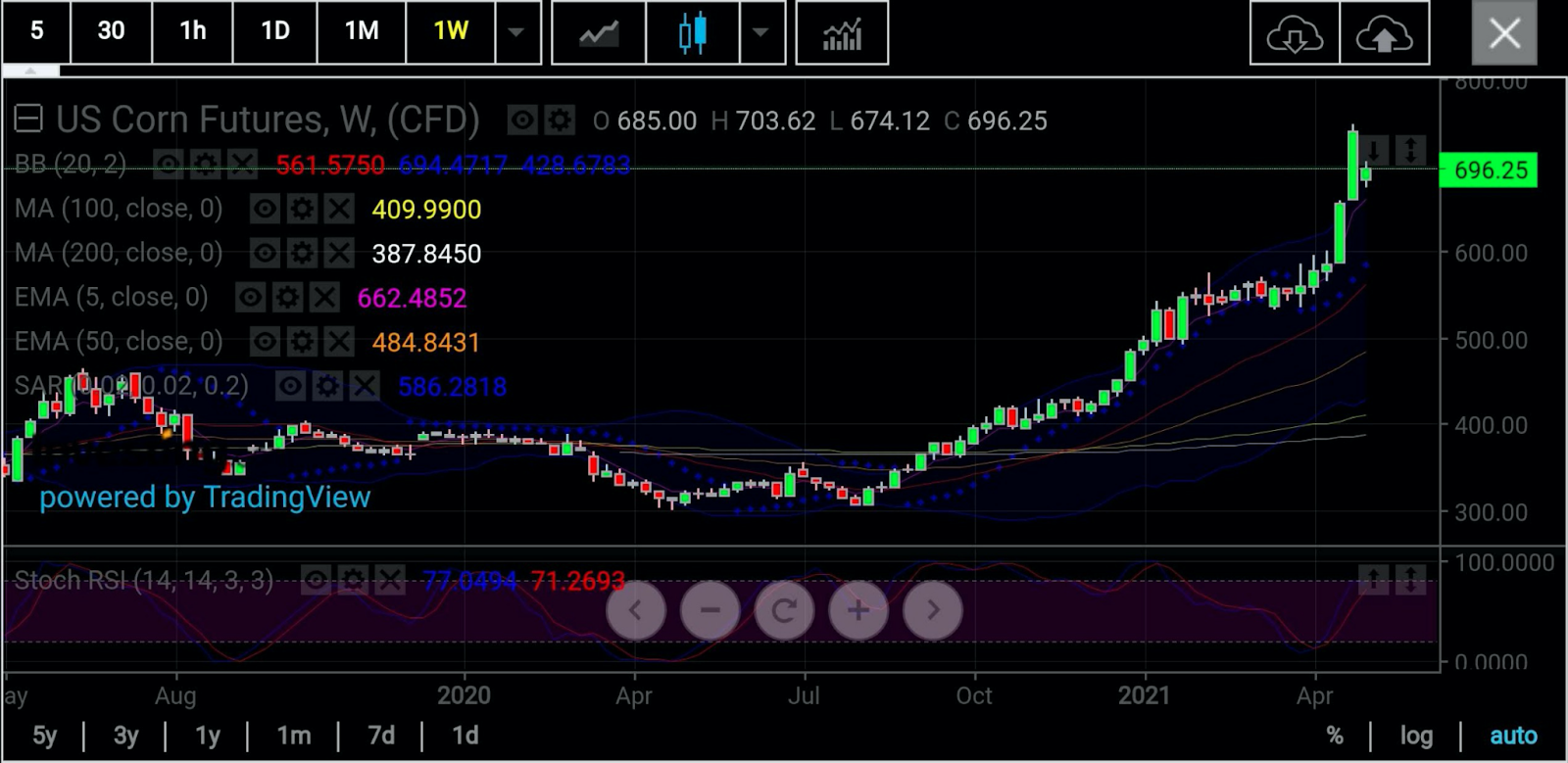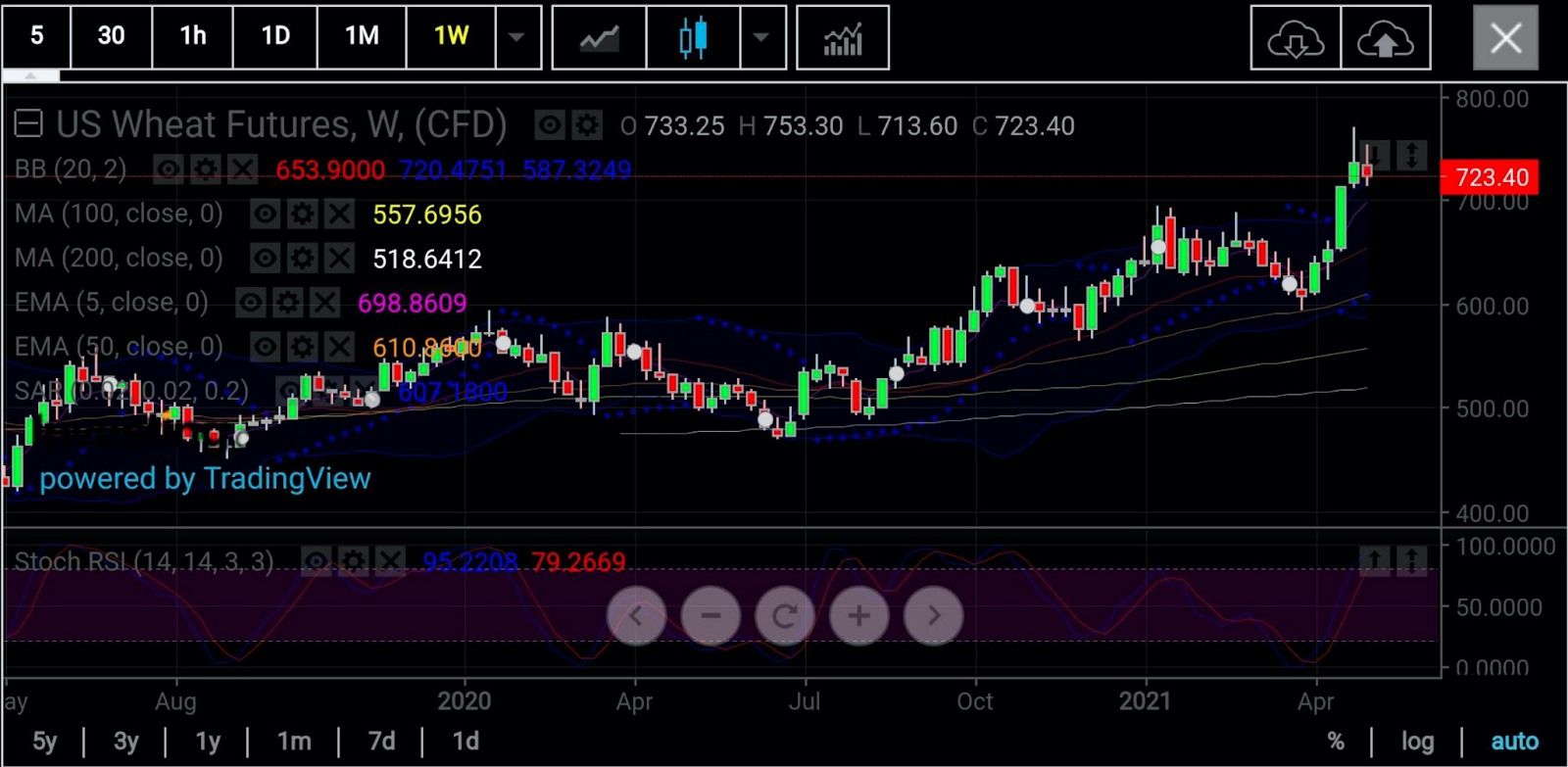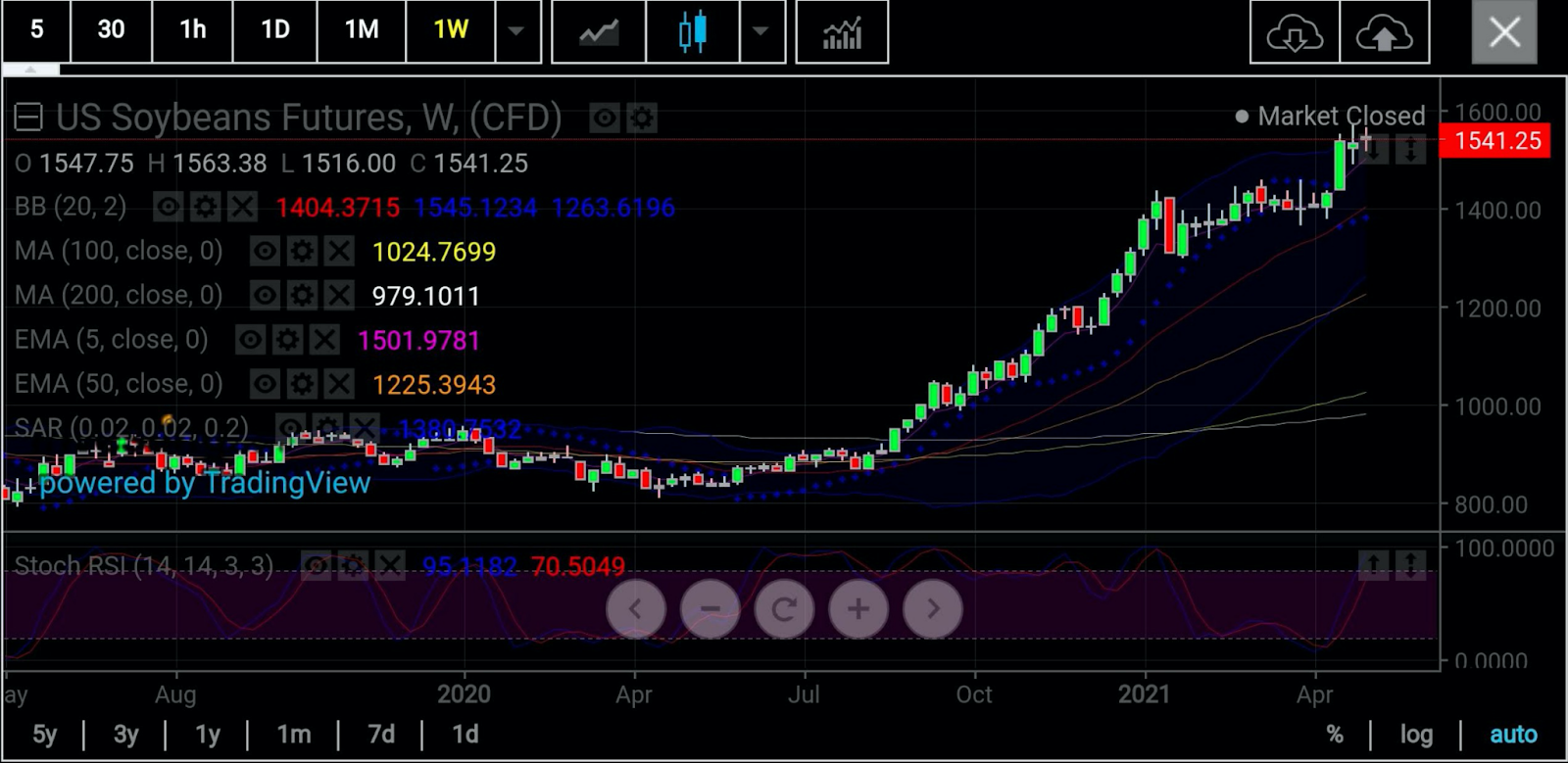The super-inflated agricultural markets have cooled since the start of May, with corn headed for its worst week in a year, wheat tumbling the most in seven weeks and soybeans just slightly higher since the month began.
While there’s no suggestion that this is an example of “sell in May and go away”—like the horror that has visited Wall Street’s tech sector in the past 24 hours—consolidation is certainly the broad picture here.
There’s also something else: a lower-cost cost entry for those who missed the party earlier in agriculture—a sector that has been one of the strongest components of the US inflation story as raw material supplies struggle to keep pace with demand in an economy ripping from an easing of the coronavirus pandemic restrictions.
What was happening on the agricultural front was typical of any sector that needed to cool after months of overheated rallies, said Dan Hueber, a veteran of the sector who authors the Hueber Report on the various grains, oilseeds and meat markets.
“Bulls enjoyed an early feast, with bears dining on the later servings” in the sector, Heuber said in a comment posted on Tuesday. While there will be more days like this over the course of the year before harvests are brought home, investors should also know how to strike when price opportunities present themselves, he said.
So, why the sudden cooling in the agriculture rally? And where are prices poised, at least technically?
Each subset of the sector has its own dynamics and we start off with corn, which has retreated the most.
Corn prices under pressure
According to Jack Scoville, chief crop analyst at the Price Futures Group brokerage in Chicago, temperatures across the US Corn Belt will be cooler this week and overall planting conditions should be fairly good over the next week. That has generally put some pressure on corn prices.
There are also worries that US corn was being priced out of the world market as it was the costliest among any competing nation, said Scoville.
“Demand for US corn has been coming at a stronger pace than estimated by the US Department of Agriculture and it looks like US ending stocks can be significantly less than current projections by the end of the year,” he added. “Demand for US corn is expected to drop now due to price spreads between the US and South America, but so far demand has held strong.”
By Wednesday’s mid-afternoon trade in Asia, US corn futures for July delivery were down 0.6% at around $6.96 a bushel. For the week, the front-month corn contract fell 6%, its biggest decline since the week ending Mar. 13, 2020.
Investing.com’s Daily Technical Outlook still rates July corn a “Strong Buy,” putting Fibonacci support as low as $6.66 and resistance as high as $7.21 in the near term.

All charts courtesy of S.K. Dixit Charting
Sunil Kumar Dixit, technical chartist at S.K. Dixit Charting in Kolkata, India, projects corn to be relatively range bound in the near-term, within the $7.46 to $6.61 band.
But he also said a break out on the higher side to $8.00 was possible, as well as a slide to $6.00 or even $5.88.
Wheat prices dented by possible production shortfall
In wheat’s case, US prices were hit by signs that there might not be enough domestic production in the coming year, even as global output and stockpiles seemed adequate.
US wheat for July was down 0.7% on Wednesday in Asian trading, hovering at $7.24 per bushel. For the week, it was down 1.6%, its most since the week to Mar. 19 this year.
Investing.com’s Daily Technical Outlook still rates July wheat a “Strong Buy,” putting Fibonacci support as low as $7.10, and resistance as high as $7.21 in the near term.

Dixit, the technical chartist, said wheat may attract sellers at below $7.13 and $6.98, while a sustained move above $7.50 may send it to $8.00.
Softening in soybeans export demand
Soybeans, the juggernaut of the agriculture rally, had seen a softening in US exports demand over the past few weeks, said Scoville.
Besides that, soy, fundamentally, was ticking all bullish boxes, he said, suggesting the present price retreat will be brief.
Said Scoville:
“The market thinks the US is going to run out of soybeans unless demand can be rationed with high prices. Some of that rationing is going on as US prices are much above offers from South America.”
“The US does not have a lot of soybeans in the country anymore as most producers have already sold. Buyers are scrambling for what is left. Brazil is rapidly exporting soybeans. Harvest activities are done there now. China has been buying for next year but buying mostly in South America as US internal demand has been strong.”
US soybeans for July delivery hovered at $15.41 per bushel, up 0.2% in Wednesday’s Asian trading. For the week, it rose 0.2%, reversing last week’s loss, but rebounding way below the 7.5% gain in the prior week.
Investing.com’s Daily Technical Outlook unsurprisingly rates July soybeans a “Strong Buy,” putting Fibonacci support as low as $15.03, and resistance as high as $15.70 in the near term.

Dixit said soybeans, after reaching highs of $15.63, were showing signs of exhaustion.
A break below $14.90 could push for $14.00 lows, though a rebound to $15.60 levels could set a next bullish target of $17.50, he said.
Disclaimer: Barani Krishnan uses a range of views outside his own to bring diversity to his analysis of any market. For neutrality, he sometimes presents contrarian views and market variables. He does not hold a position in the commodities and securities he writes about.
